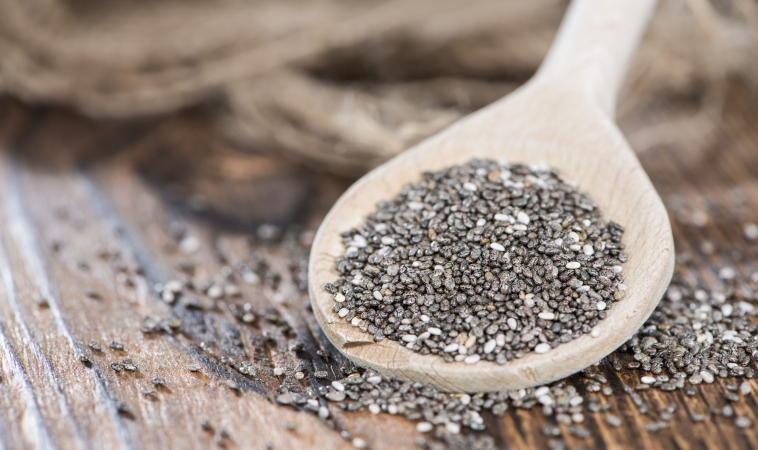Protein is an essential nutrient our bodies need to function, but just how much do we need and where do we find it, especially if we don’t consume animal protein? Medical experts say the daily dietary protein intake can be calculated by dividing our weight in pounds by 2.2, and that will tell us how many grams of protein we need.
Protein can be overdone, though – and this puts a strain on our liver and kidneys. Excessive intake of protein also has been linked to cancers such as colon, breast, prostate and pancreas.
We can get all the protein we need from plants, or can balance that intake with other sources. Either way, make sure you’re getting enough, but not too much of this nutrient.
Dr. Ren Bedell, ND, of Tempe, Az says, “I’ve noticed that it is difficult for some vegans to get enough protein in their diet and that sometimes they rely too much on carbohydrates or processed food in their diet. This slideshow can be a helpful tool for them.”
Bedell adds “Protein is an incredibly important component of our food that should be included in every meal. Many people new to the vegan diet forget that the main difference between a meat eating diet and a vegan diet is the protein source.
“Plant proteins have the added benefit of being high in many essential nutrients, which make them a wonderful addition to meat eaters and vegans alike.”
But to benefit the most from plan-based proteins, Bedell said, “To get the most out of the plant proteins there are certain types that have more enhanced nutrition. Nuts are absolutely great but it is best to eat them raw, except peanuts which should always be roasted. Nut butters are also great too. Many vegans rely too heavily on legumes which can become a problem since they are copper heavy and the rest of their diet is low on zinc. So it is best to eat a variety. Also don’t forget about fermented soy products which are rich in B vitamins, like tempeh, miso, and natto.
“Eating a quality plant protein with every meal is the first step in making a healthy vegan diet,” he said.
Here are seven plant-based sources of protein that we all can enjoy.
Slideshow: Use arrows to go to next slide

Lentil plant protein essential in muscle production, hormones: An amazing source of protein, fiber and carbohydrates, lentils are a nutritious source of several amino acids including isoleucine, leucine and threonine. One cup of cooked lentils equals 18 grams of protein. They are found in many colors including red, brown and green. Cooked with spices they can be a comforting addition to most meals.

Nuts add flavor and plant protein to meals and snacks: Nuts come in several flavors, from sweet to woody. What they have in common includes relatively high percentages of proteins – and each species of nut carries essential amino acids. Pistachios have the highest protein with 5.8 grams, followed by walnuts with 5 grams, cashews with 4.4 and almonds with 4 grams.
Almonds and cashews contain isoleucine, good for muscle production, maintenance and recovery, and essential in hemoglobin formation, blood sugar control and energy; almonds and walnuts contain leucine, Brazil nuts, cashews have methionine’ and you can find phenylalanine in cashews, and hazelnuts.

Seeds can provide plant protein, flavor and are heart-healthy: There are many seed choices on the market today, and that is good news! These small but flavor-packed plant-based protein sources can be added to almost anything you eat, from major meals to salads, to fruit dishes and desserts, many seeds, such as chia, and hemp (3 tbsp = 10g protein), contain heart-healthy omega-3 fatty acids as well. Also try sunflower, sesame, flax, and pumpkin seeds.

Grains are a great source of plant protein: Grains have been a major component of the human diet from the beginning. Ancient grains such as quinoa (9 grams protein per cup), amaranth, bulgur, brown rice and wheat germ have high protein content. Oatmeal has 6 grams per cup – and if you eat sprouted grain bread you can get up to 10 grams of protein from the bread alone.

Spirulina, a colorful plant protein that adds sweetness: Protein-rich spirulina is known for its deep blue-green color and how it lends that color to whatever you mix it with. But color is not really what it brings to the table that counts, it’s the 8 grams of protein per 2 tablespoons that matters. Blend this into smoothies, use as a snack or in dessert recipes. It is sure to please your body and your taste buds.

Legumes are an essential plant protein in any diet: Legumes are high in fiber, calcium, iron and protein. The varieties of legumes are mind boggling and with their many different forms comes different levels of protein, the more mature the bean, the higher the protein content. Just for an idea on their versatility, some of the commonly found types with their protein values include: Dry roasted soybeans, 40 percent; roasted peanuts 26 percent; falafel, 13 percent; and boiled pinto, black, chickpeas, kidney beans 9 percent.

Green vegetables that contain plant protein should not be forgotten when planning daily protein intake: It is possible to enhance your protein intake by making sure you eat your green veggies. Some sources of protein include Brussels sprouts (and other brassicas) with 4 percent protein, 2 cups of chopped kale have 4.5 grams of protein, turnip greens have 3 grams.























